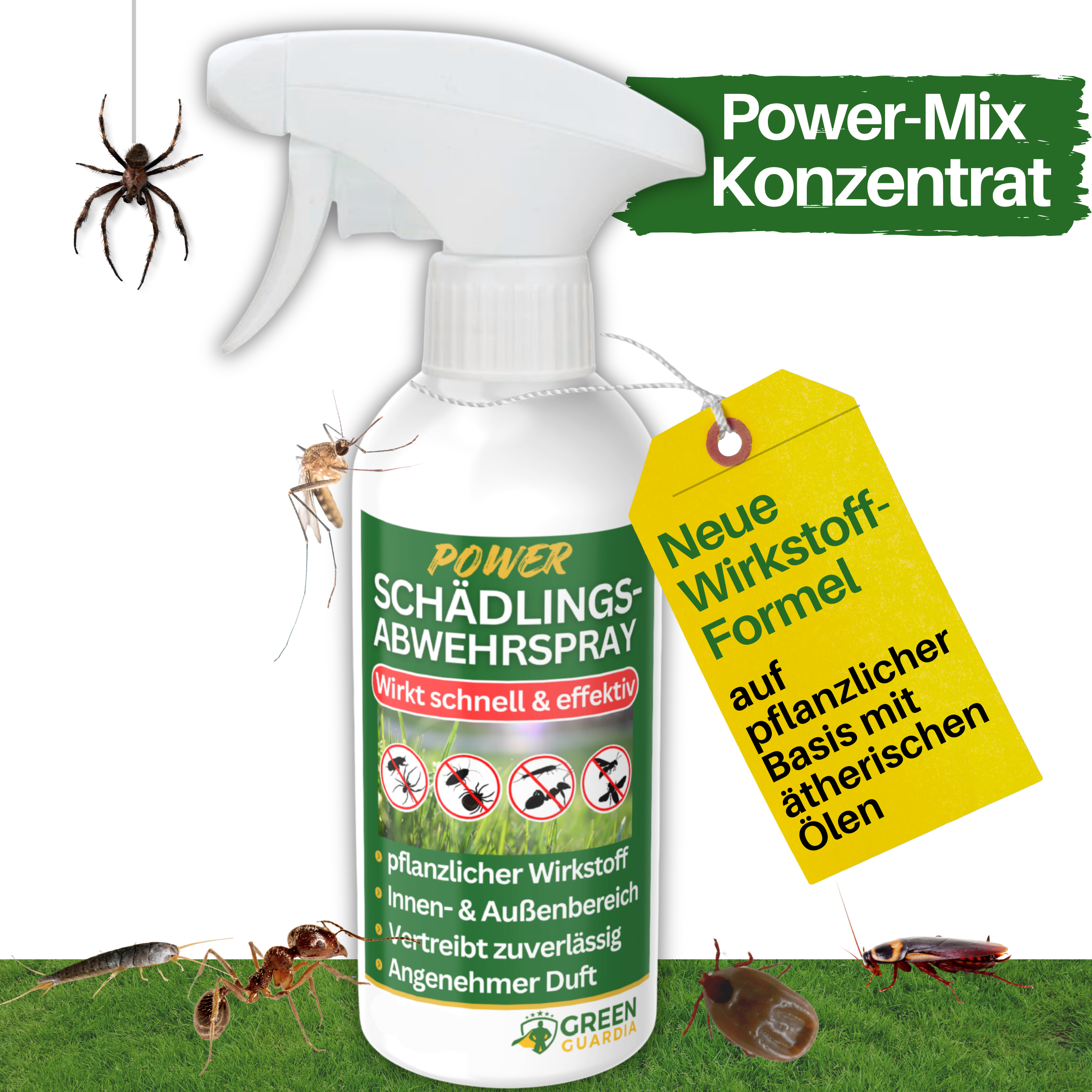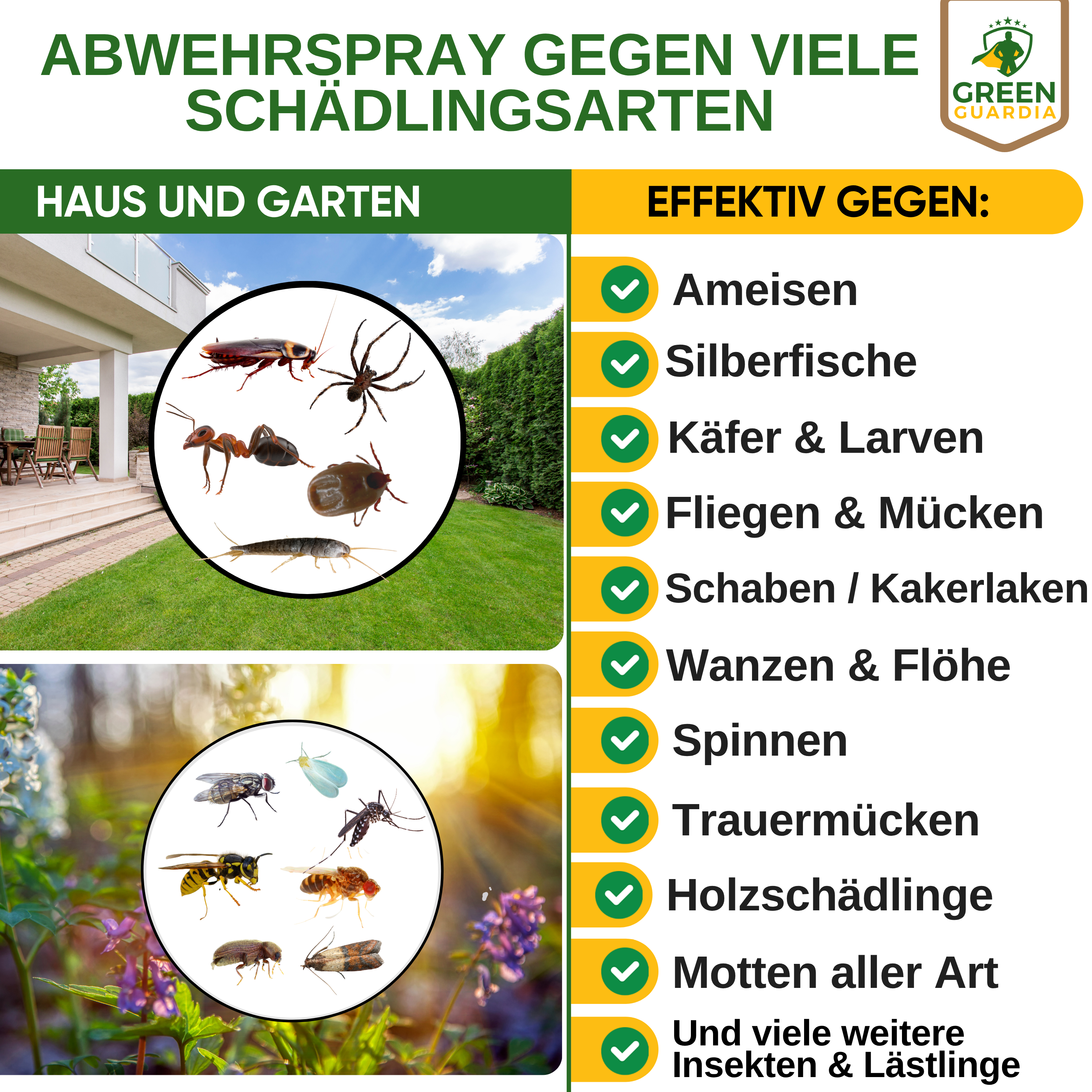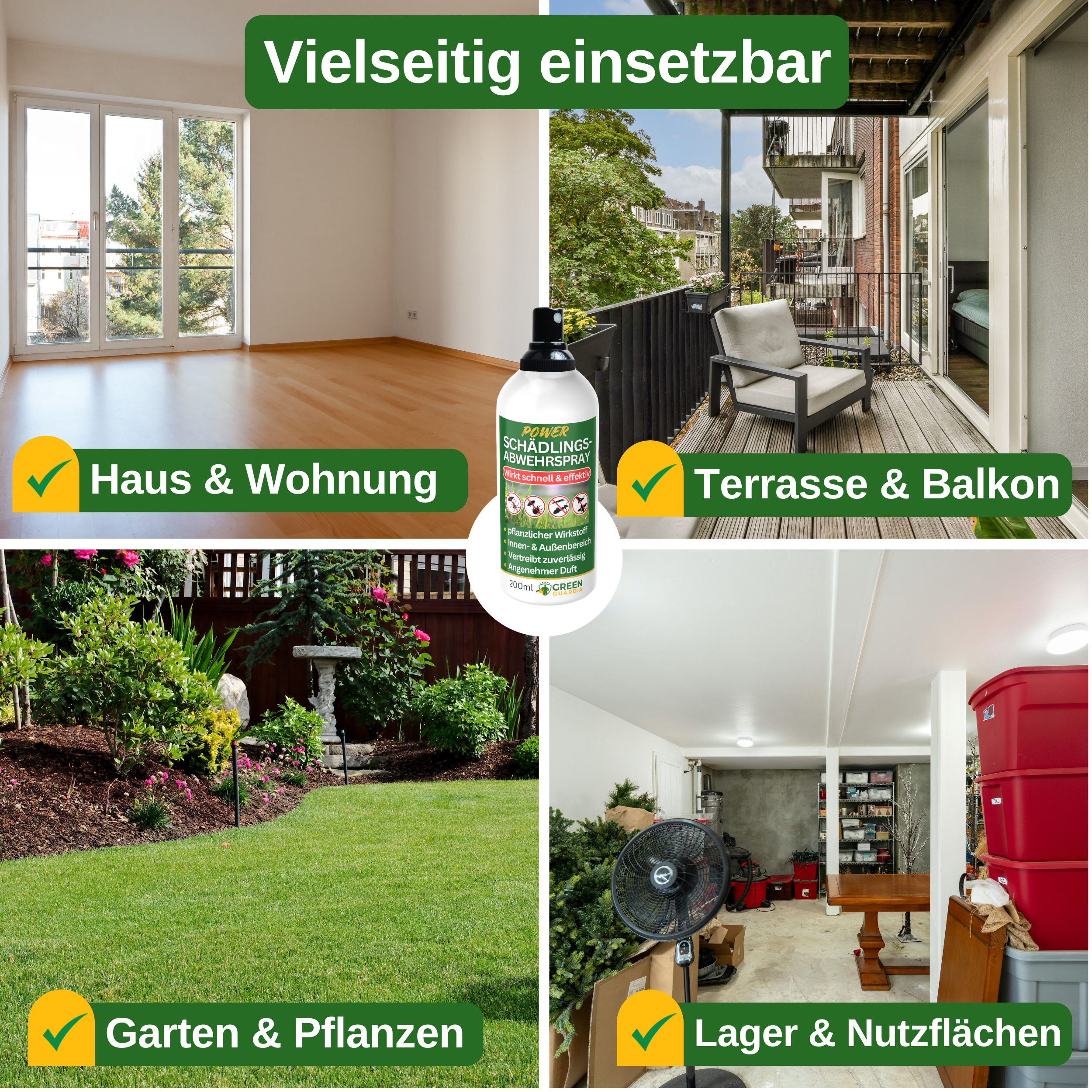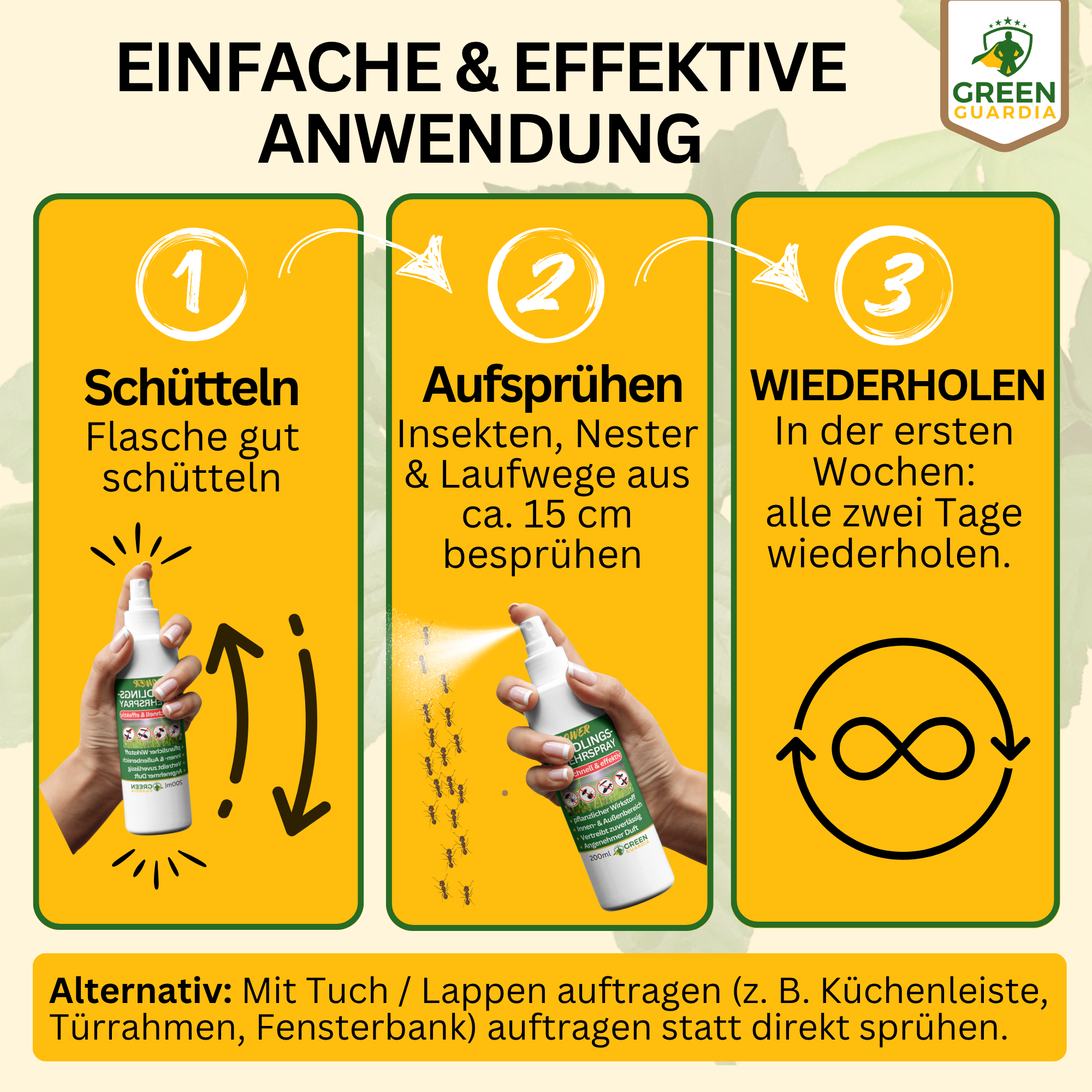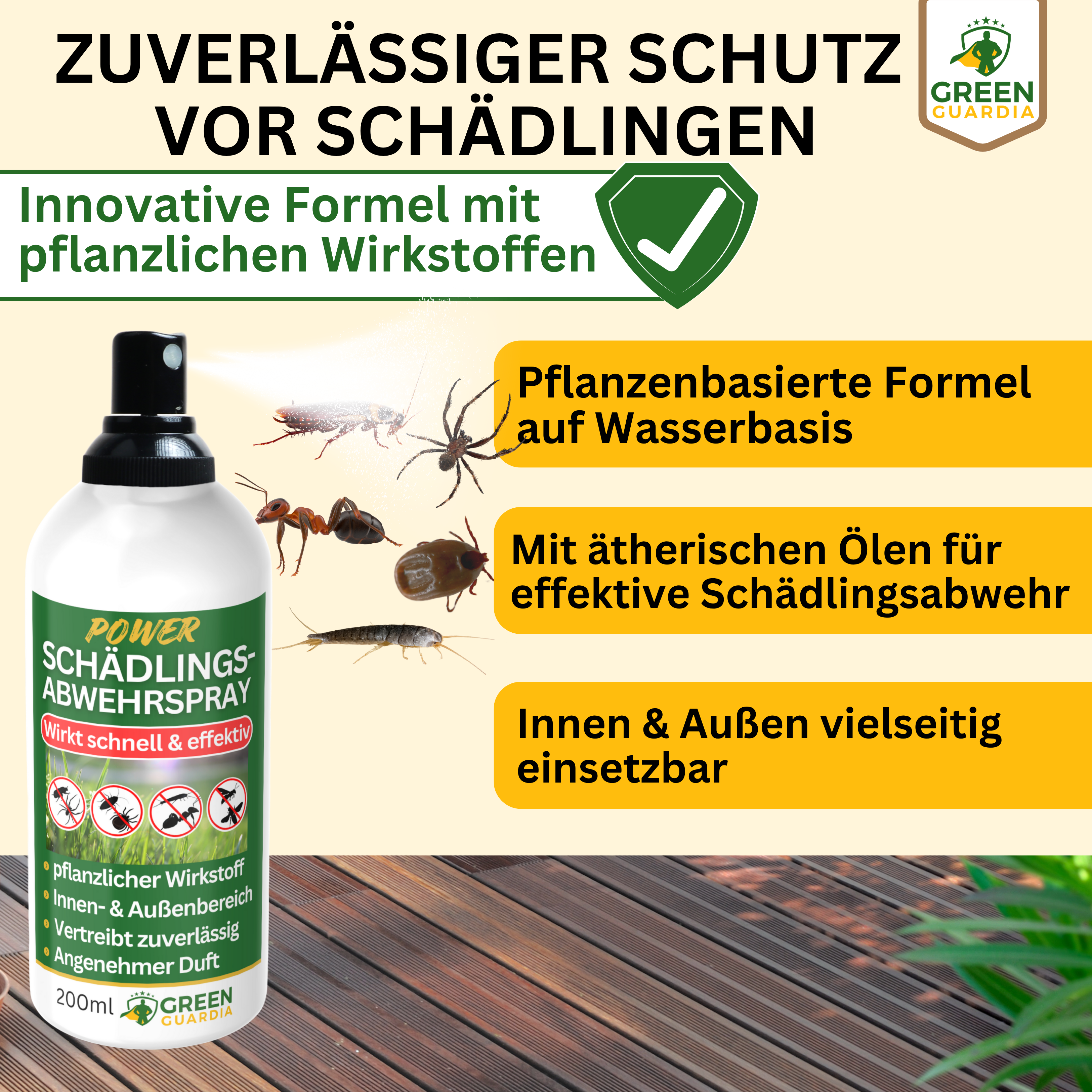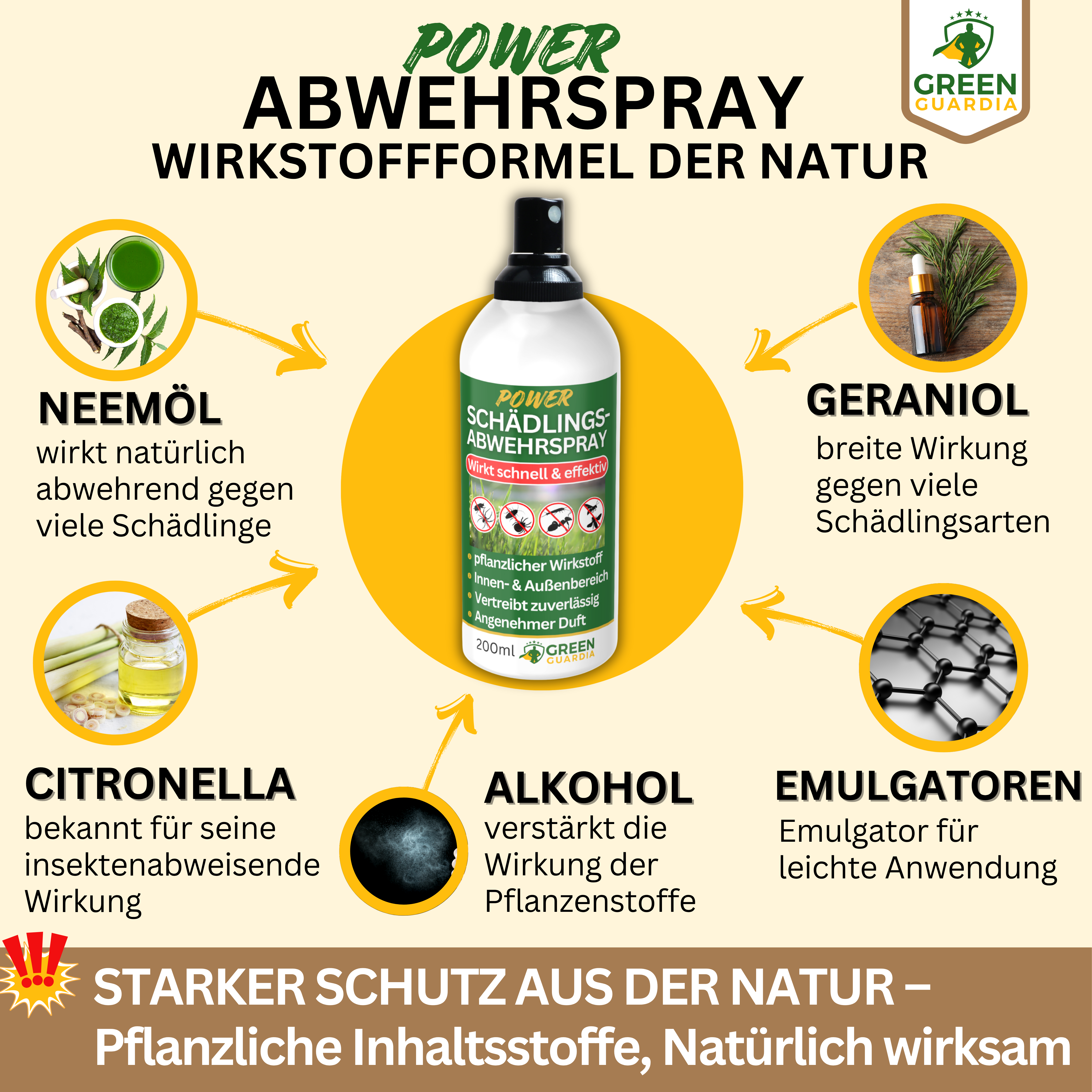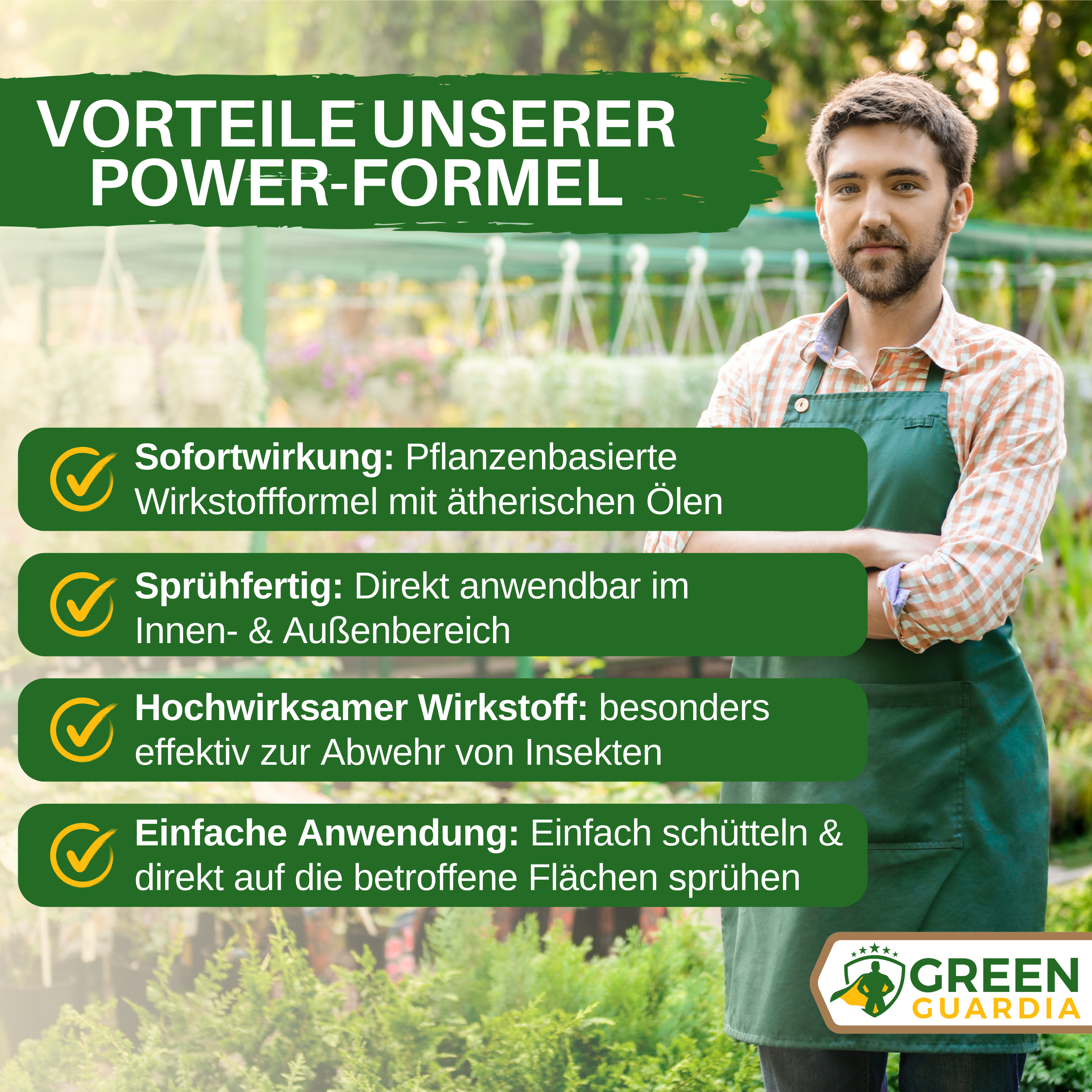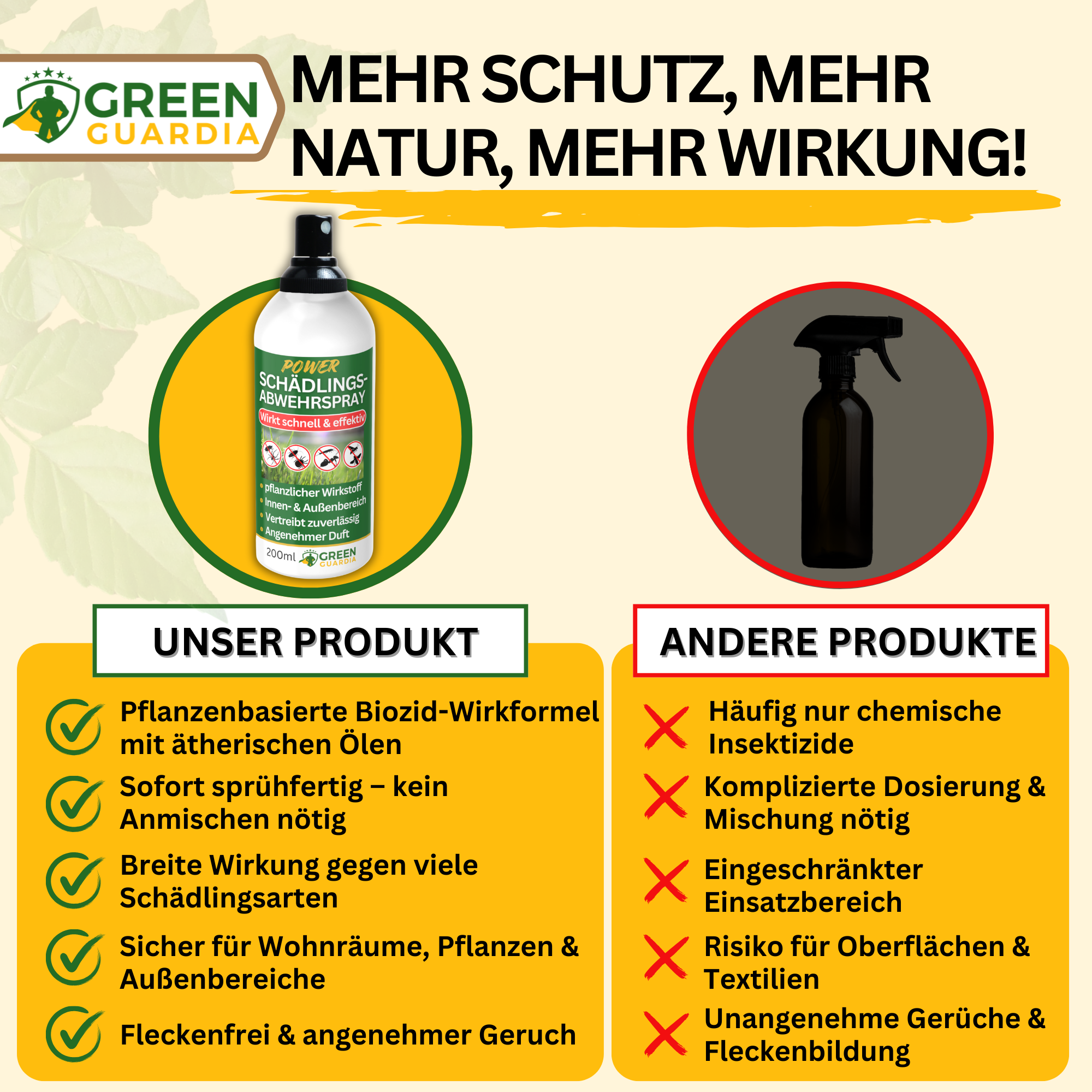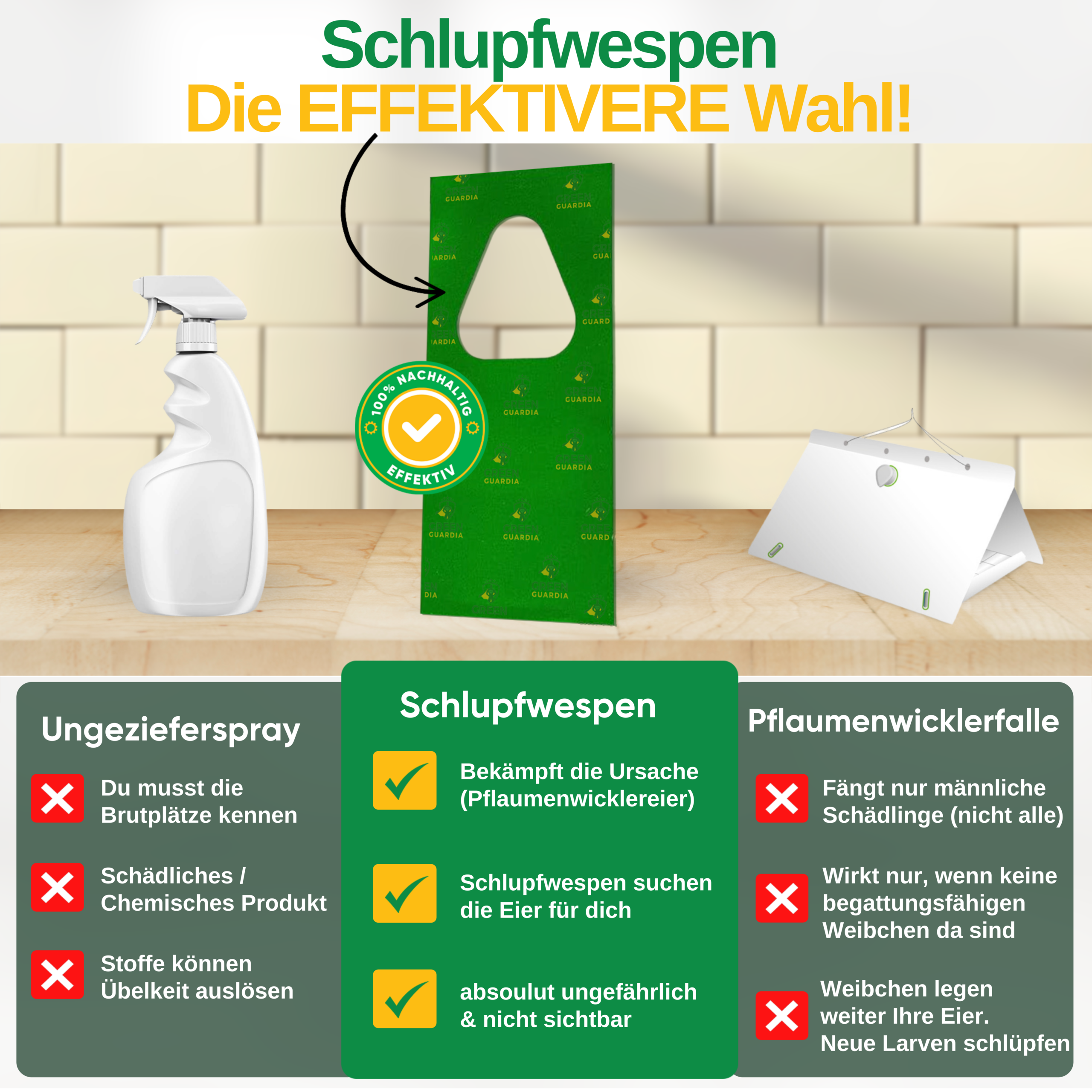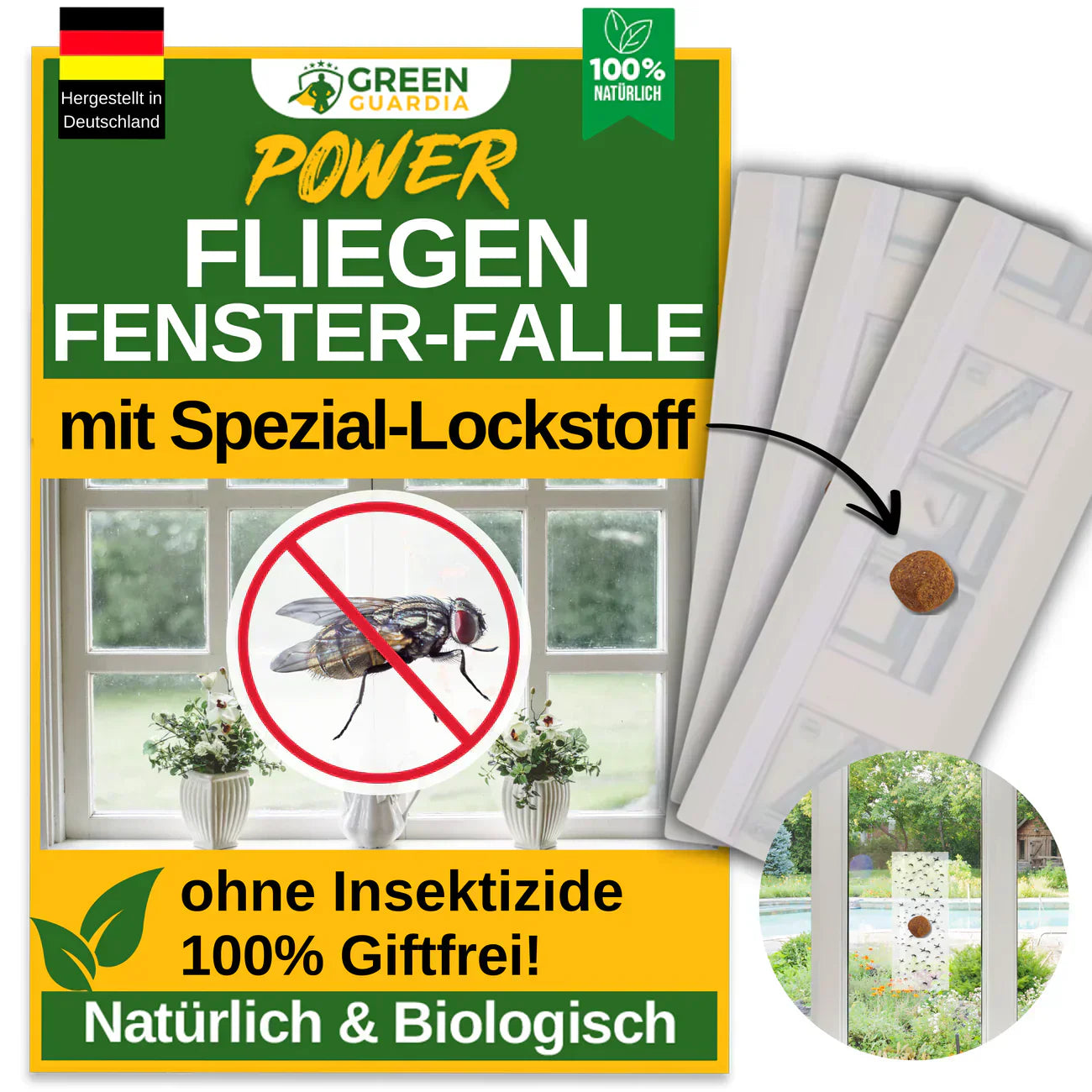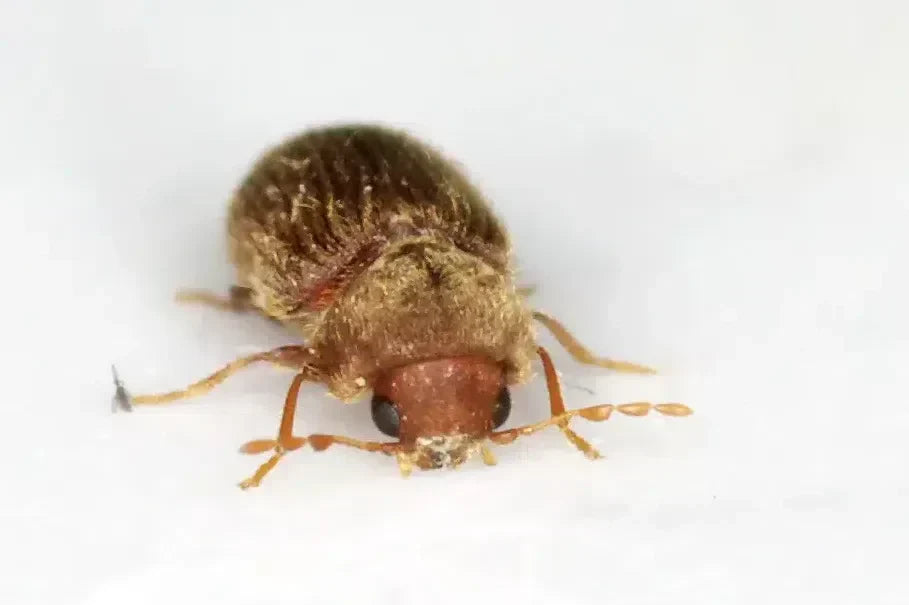Get rid of pests naturally – how to protect your plants without chemicals
Pests in the garden or on the balcony can quickly become a nuisance – whether aphids, spider mites, or fungus gnats: They not only threaten the health of your plants, but also your harvest. But instead of resorting to chemical pesticides, more and more gardeners are opting for a sustainable approach: protection with natural-based repellent spray.
Why? Because modern, plant-friendly formulas are more effective and environmentally friendly than ever before. In this article, you'll learn how natural pest control remedies work, how to use them correctly—and how you can protect your green paradise without using any poison.
What exactly is a defense spray?
A repellent spray is a liquid preparation specifically designed to repel and keep pests away – whether in the garden, on the patio, or indoors around potted plants. The latest generation is based on natural active ingredients such as neem oil, peppermint extract, garlic oil, or lavender – ingredients that are harmless to humans and pets, but extremely unpleasant for pests.
Features & Benefits
- Biodegradable and environmentally friendly
- Ready to use – no mixing or dosing required
- Odorless or pleasantly herbal scent
- Not harmful to beneficial insects such as bees or ladybugs
- Versatile – from houseplants to vegetable patches
Production & Mode of Action
Natural repellent sprays are usually produced using a gentle process that involves cold-pressing or water-based extraction of essential oils. These active ingredients target the pests' senses—especially smell and taste—and cause them to stay away or quickly flee.
A good example is neem oil, extracted from the seeds of the neem tree. It not only acts as a deterrent but also inhibits the development of larvae—a dual effect. Combined with other natural components, this creates an effective protective shield.
Application: How to use the spray correctly
🕒 When should you spray?
- Early morning or evening to avoid sunburn on the leaves
- Especially during the growth phase and when pest infestation is visible
📍 Where is the spraying taking place?
- Directly onto the affected parts of the plant – don’t forget the undersides of the leaves!
- For houseplants: regularly spray the soil lightly
🔁 How often should it be used?
- Initially every 2–3 days, later weekly for prevention
- Reapply after rainfall, as the protective film can be washed off
💡 Extra tip:
If you want to protect your plants permanently, combine the spray with natural barriers such as herb beds or mixed crops. This creates an environment where pests don't feel at home in the first place.
Conclusion
Effective plant protection no longer has to be chemical. With a natural pest repellent spray, you're making a conscious decision for the environment, your health, and long-term garden success. It's easy to use, effective—and completely safe for children, pets, or beneficial insects.
🔔 Now it's your turn!
Try our proven repellent sprays and protect your plants naturally and effectively. Visit our shop or learn more on our natural plant protection page.
Discover now

